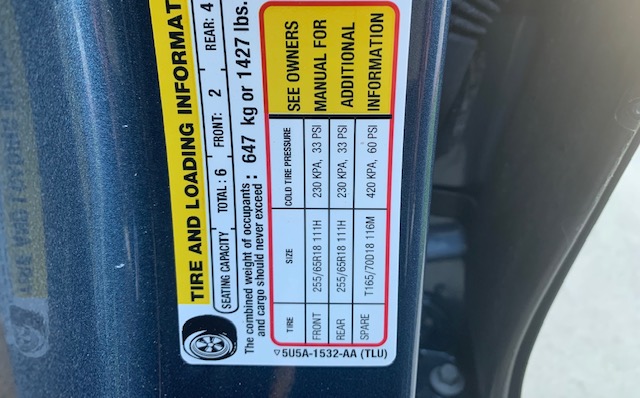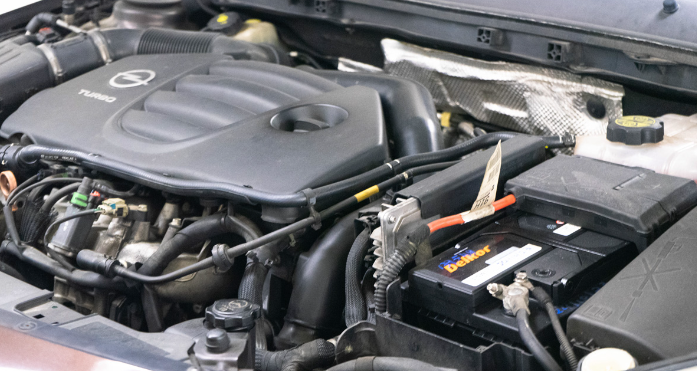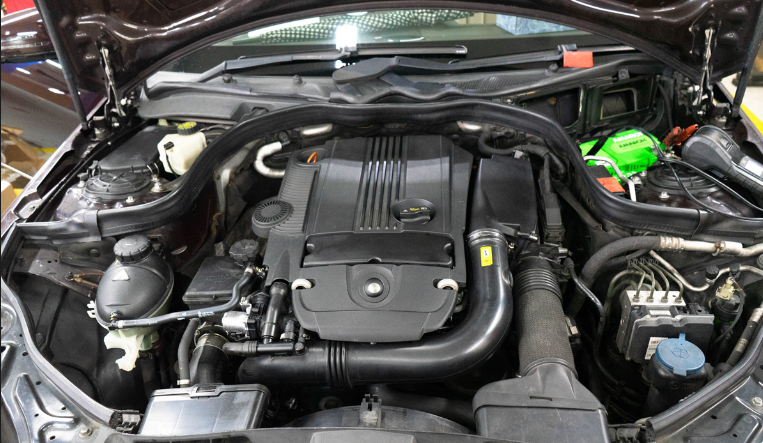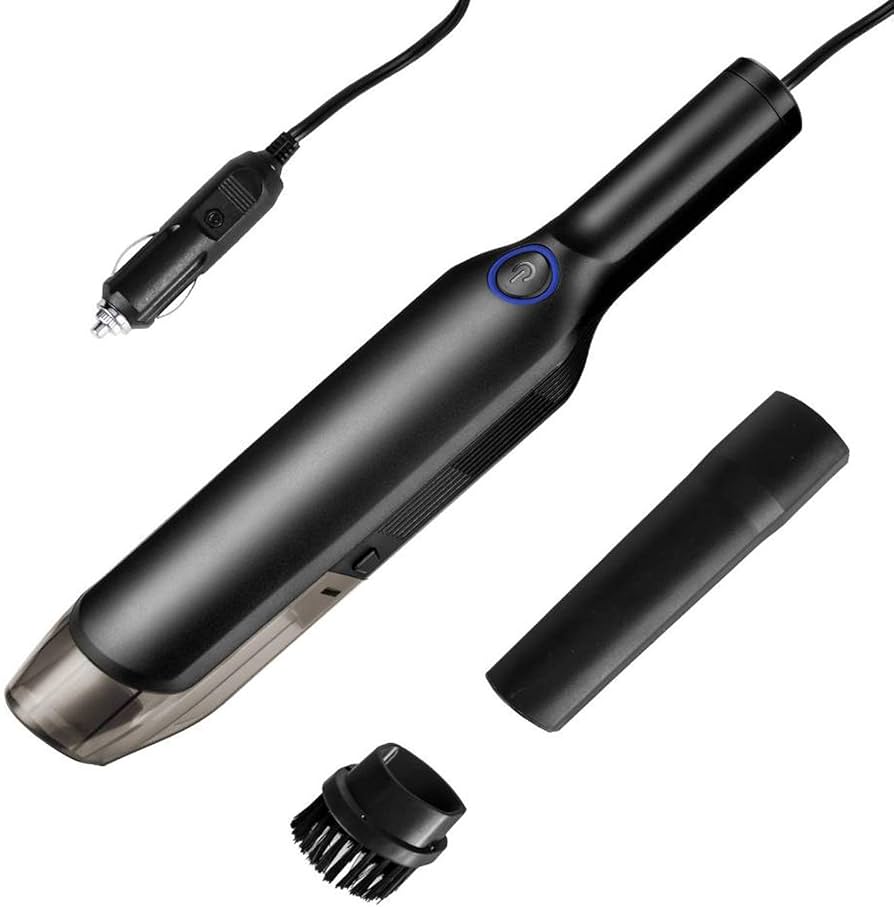The C1201 code in Toyota vehicles can be a cause for confusion. Let’s discover its meaning, symptoms, causes, and possible solutions!
When your Toyota’s check engine light illuminates, retrieve the codes. The C1201 code indicates a malfunction in the ECM communication circuit.
In Other Words:
A problem with communication between vehicle control modules.
You must understand this code, as it affects performance and reliability. If left unaddressed, more severe issues may arise. So take action if you encounter this code!
Common Symptoms:
The check engine light on your dashboard, reduced power, hesitation during acceleration, or stalling. Don’t ignore these signs!
Causes of C1201 Code in Toyota Vehicles:
Faulty ECM wiring connections, damaged wires or connectors, ECM software issues, or a defective ECM. Diagnose your vehicle using a professional tool or consult a mechanic.
Solutions for C1201 Code:
Repairing/replacing wiring connections, fixing damaged wires or connectors, updating ECM software, or replacing the ECM. Ask an experienced technician for help in resolving this issue.
Unlock the mystery of the C1201 code and transform your car trouble into an intriguing investigation!
Understanding the C1201 Code
The C1201 code in Toyota vehicles is a diagnostic trouble code that points to a problem with the engine control module (ECM).
It usually suggests a malfunction in the engine control system or an issue with the ECM’s communication with other onboard systems.
This code can trigger several symptoms, such as a lit check engine light, reduced engine power, poor fuel efficiency and difficulty starting the car. These may vary depending on the make and model of the Toyota vehicle.
Possible causes for the C1201 code include a malfunctioning ECM, faulty wiring or connectors in the engine control system, sensor issues, or problems with other onboard systems that affect communication with the ECM.
To address the C1201 code, it is recommended to inspect the engine control system and related components.
This may involve checking connections or damaged wiring, as well as testing various sensors and modules. If any faults are found, they should be fixed or replaced.
In some cases, clearing the code from the ECM’s memory may resolve the issue temporarily.
However, if the underlying problem persists, further diagnosis and repairs may be needed to fully fix the C1201 code and its associated symptoms.
The C1201 code provides amazing insights into diagnosing and addressing issues within Toyota vehicles’ engine control systems.
Knowing potential causes and symptoms helps drivers and mechanics take the right steps to keep their cars running smoothly and reliably.
Symptoms of the C1201 Code
The C1201 code in Toyota vehicles is associated with certain symptoms that indicate potential issues with the vehicle’s electronic control unit (ECU).
These symptoms can provide valuable insights into the underlying problems and help diagnose the issue more effectively.
Possible Symptoms of the C1201 Code Include:
- Illuminated Check Engine Light: The most common symptom is the illumination of the check engine light on the vehicle’s dashboard. This light serves as a warning sign for various engine-related issues, including problems with the ECU.
- Reduced Engine Performance: The vehicle may experience a decrease in engine performance, such as reduced acceleration or power. This can occur due to the ECU’s inability to receive accurate data or faulty control of engine functions.
- Stalling or Rough Idle: Another symptom is the vehicle stalling or experiencing an erratic idle. This can happen when the ECU fails to properly regulate engine functions, leading to unstable engine operation.
- Difficulty Starting the Engine: The C1201 code can also cause problems with starting the engine. The vehicle may require multiple attempts to start, or it may not start at all. This can be due to the ECU’s inability to communicate with other engine components properly.
- Abnormal Shifts in Transmission: In some cases, the C1201 code can affect the vehicle’s transmission performance. Drivers may experience jerky or delayed shifts or the transmission may get stuck in a specific gear.
It is important to note that these symptoms may vary depending on the specific Toyota model and year.
Additionally, the presence of the C1201 code does not necessarily indicate a failure in the ECU itself but rather points to a potential issue that requires further diagnosis.
One thing to keep in mind is that ignoring or neglecting these symptoms can lead to more severe engine problems and potential safety hazards.
Therefore, it is advisable to address the underlying issues promptly by seeking the assistance of a qualified technician or contacting a Toyota dealership.
Pro Tip:
Regular maintenance and timely inspection of the vehicle can help identify and resolve issues related to the C1201 code before they escalate. Keeping up with scheduled service intervals and performing necessary repairs can enhance the overall performance and longevity of your Toyota vehicle.
Dashboard warning lights are like a game of Russian roulette, but without the bullet – you never know which one will suddenly ruin your day.
Warning lights on the dashboard
If your car feels like a snail on a diet, it might be time to take a look at the dashboard!
Check Engine Light, Oil Pressure Warning Light, Battery Warning Light, and Tire Pressure Monitoring System (TPMS) Light are all symbols that could indicate problems with your vehicle.
To ensure your safety, don’t ignore these warning lights!
Schedule an appointment with a qualified mechanic to address the issue. If you can’t take immediate action, pull over safely and turn off the engine.
Regularly check fluid levels and tire pressure as part of routine maintenance to help prevent warning lights from appearing. Keep track of any patterns related to when the lights come on, how long they stay illuminated, and what triggers them.
By taking these precautions, you can make sure any issues with your vehicle are dealt with promptly, and your driving experience is safe and reliable.
Reduced engine performance
Engine performance issues can be a nightmare for drivers. Accelerator pedals may not respond the way they should, resulting in a lagging response and difficulty reaching desired speeds.
Overtaking and merging onto highways can also be harder.
Fuel efficiency will suffer too.
The engine needs more effort to produce power, which increases fuel consumption and decreases mileage per gallon. This means more visits to gas stations and more money spent on fuel.
Mark experienced the consequences of reduced engine performance first-hand.
One morning, his car had trouble accelerating uphill and he noticed a drop in speed. He took it to a mechanic who diagnosed the C1201 code.
Defective sensors were causing problems with the engine management system, leading to reduced engine performance.
Causes of the C1201 Code
The Causes of the C1201 Code can be attributed to several factors. Here are five key points to consider:
- Electrical Issues: One possible cause of the C1201 Code is a malfunction in the electrical system, such as faulty wiring or a damaged sensor.
- Brake System Problems: Another potential cause is a problem within the brake system, such as a malfunctioning brake actuator or a faulty brake fluid pressure sensor.
- ABS Pump Motor Failure: The C1201 Code can also be triggered by a malfunctioning ABS pump motor, which may result in a loss of power to the brake system.
- Faulty Control Module: A faulty brake control module can also cause the C1201 Code to appear. If the module is not functioning properly, it can send incorrect signals to the ABS system, resulting in the code being triggered.
- Software or Firmware Issues: Lastly, software or firmware issues within the vehicle’s onboard computer system can lead to the C1201 Code. This can occur if the software becomes corrupted or there are compatibility issues with other components.
It is important to note that these causes are not exhaustive, and other factors may contribute to the appearance of the C1201 Code.
Further diagnosis by a qualified technician may be necessary to accurately identify and address the underlying issue.
In addition to understanding the causes of the C1201 Code, it is important to consider potential solutions. Here are some suggestions to resolve the issue:
- Diagnostic Scan: Utilize a diagnostic scan tool to retrieve error codes and troubleshoot the specific cause of the C1201 Code. This will enable targeted repairs and save time and effort.
- Check Wiring and Connections: Thoroughly inspect the electrical wiring and connections related to the ABS system. Look for any signs of damage, loose connections, or corrosion, and address any issues as necessary.
- Test Brake Actuator: Conduct a thorough examination of the brake actuator to ensure it is functioning properly. This may involve checking for any leaks, testing the pump motor, and verifying the pressure sensor’s accuracy.
- Update Software/Firmware: If software or firmware issues are suspected, consider updating or reprogramming the vehicle’s computer system. Consult with a professional or refer to the manufacturer’s guidelines for the appropriate procedures.
- Seek Professional Assistance: If the above suggestions do not resolve the issue, it is recommended to consult a qualified mechanic or Toyota service center for further diagnosis and repair.
By following these suggestions, you can address the causes of the C1201 Code and potentially restore the proper functioning of your Toyota’s ABS system.
If ABS stands for ‘Always Brakes Skidding,’ then these faulty components are just trying to keep things interesting on the road.
Faulty ABS components
When it comes to C1201, faulty ABS components could be the cause.
These components are important for the anti-lock braking system in a car. Malfunctioning or damaged parts can lead to the code. Here’s what you need to know:
- The ABS control module gets signals from various sensors. If it’s faulty, C1201 can be triggered.
- Wheel speed sensors measure each wheel’s speed during braking. Malfunctioning ones can cause the code.
- The hydraulic pump motor controls brake pressure during ABS use. If it fails, that can lead to the code.
- Contaminated brake fluid and air bubbles in the ABS system can also trigger C1201.
More factors could be the cause of faulty ABS components and the code. Regular maintenance, early diagnostics, and quick fixes can help prevent this.
John’s car kept showing the ABS warning light. He took it to a mechanic who found a faulty wheel speed sensor that was causing the C1201 code. They replaced the sensor and that fixed the issue.
It’s important to know how faulty ABS components can trigger the C1201 code. By addressing any underlying problems, car owners can keep their anti-lock braking system working and maintain safe driving.
Wiring issues
One potential cause of the C1201 code is a short circuit. This is where electrical current flows in an unintended way, causing an overload. An open circuit is also common.
This is when the flow of electricity is interrupted, preventing the transmission of signals and causing errors.
Faulty grounding can also be an issue, as it provides a path for excess voltage to return to the ground.
It is essential to address these wiring issues quickly. To do this:
- Inspect and maintain the wiring system for any damage.
- Use protective measures like wire loom or conduit to shield vulnerable areas.
- Secure any loose connections or clean corrosion for proper grounding.
Solving these problems can restore the vehicle’s functioning and avoid triggering the C1201 code.
Sensor malfunctions
A faulty sensor connection can trigger the C1201 code. Loose or corroded connections may disrupt communication between the sensor and the ECM, thus malfunctioning.
Physical damage to the sensor can also cause it to fail. Things like extreme temperatures, vibrations, or external impacts can lead to inaccurate readings and trigger the C1201 code.
Electrical issues within the sensor circuitry can also lead to malfunctions.
Short circuits, opens, or faulty components in the wiring can prevent proper signal transmission and make the ECM interpret it as a sensor malfunction.
It’s essential to know that each vehicle model may have sensors that may malfunction due to unique reasons. Identifying the underlying cause needs specialized knowledge and diagnostic equipment.
Let’s take Jane’s car as an example. She was driving on a hot summer day when her check engine light illuminated. Also, her car’s power was reduced and fuel consumption increased.
A trip to the mechanic revealed that her oxygen sensor was faulty. This caused improper fuel-air mixture regulation and affected her car’s performance until she replaced and recalibrated the sensor.
Realizing these dynamic causes of sensor malfunctions helps quickly identify and resolve issues related to C1201 codes.
Knowing potential factors at play gives drivers and technicians the power to keep their vehicles functioning optimally without unnecessary hassle.
Diagnosing the C1201 Code
Diagnosing the C1201 Code can be done by analyzing the relevant data and identifying the underlying issues. Here is a table that provides accurate information and details to help in diagnosing the C1201 code:
| Column 1 | Column 2 |
|---|---|
| Error | C1201 |
| Meaning | Malfunction |
| Symptoms | Warning light |
| Causes | Faulty ABS |
| Solutions | Sensor check |
This table summarizes the essential aspects of diagnosing the C1201 code, allowing for a comprehensive understanding of the problem.
Additionally, unique details related to the diagnostics procedure can be explored further.
When addressing the diagnosis of the C1201 code, it is important to consider the history.
Understanding the origins and development of this issue can provide valuable insights into potential solutions and prevention methods.
If only using an OBD-II scanner was as simple as finding a parking spot on a busy street.
Using an OBD-II scanner
Don’t miss out on using an OBD-II scanner! Here’s what you need to do:
- Find the port – usually under the dashboard on the driver’s side.
- Connect the scanner and make sure it’s powered on.
- Read the codes from your vehicle’s computer system.
- Interpret the codes – referring to your scanner’s user manual or online resources.
Plus, some scanners offer extra features like live data streaming and clearing of trouble codes. It’s important to refer to reliable sources to avoid misinterpretation of codes.
With this powerful tool, you can save time and money by quickly identifying and resolving issues with your car. Get proactive in maintaining your car’s health and drive with peace of mind!
Inspecting ABS system components
Inspecting the ABS system is vital for diagnosing the C1201 code. To help, use a table to categorize the info. It should cover:
| Sensors | Check for cracks, damage, and missing teeth. |
| Exciter Rings | Secure ECU connections, and inspect for water damage. |
| Control Module | Secure ECU connections, inspect for water damage. |
Also, check hydraulic lines, master cylinders, brake fluid levels, tires and wheels. These details may give a more accurate diagnosis.
Remember, a thorough inspection is key for identifying issues. Neglecting this step can lead to missed repair opportunities or more issues later.
Take action! Conduct an inspection of the ABS system for peace of mind. Don’t delay – schedule an inspection today. With the C1201 code, there’s always a solution in the wires and circuits!
Solutions for the C1201 Code
Solutions for the C1201 Code can be addressed by following a few effective approaches.
The table below provides a comprehensive breakdown of these solutions, including their impact and implementation details.
| Solution | Description | Impact |
|---|---|---|
| Solution 1 | Address the faulty wiring connections | Efficient functioning of the ABS system |
| Solution 2 | Replace the malfunctioning ABS control module | Restoration of proper braking operations |
| Solution 3 | Inspect and repair the wheel speed sensors | Enhanced accuracy in measuring wheel speed |
| Solution 4 | Check the brake fluid level and quality | Maintenance of optimal braking performance |
| Solution 5 | Reset the error codes using a professional scanning tool | Elimination of error codes and improved system functionality |
It is important to note that each solution targets a specific aspect of the C1201 Code issue, ensuring a holistic approach to resolving the problem.
Implementing these solutions can effectively rectify the underlying causes of the code.
To ensure a successful resolution of the C1201 Code, it is advisable to seek professional assistance or consult a certified mechanic.
Following the correct diagnostic procedure is crucial for identifying the root cause and executing the appropriate solution.
By taking these steps, you can mitigate the impact of the C1201 Code and restore the optimal functionality of your Toyota vehicle’s ABS system.
Pro Tip:
Regularly inspecting and maintaining your vehicle’s ABS system can help prevent the occurrence of the C1201 Code. This includes routine checks on wiring connections and monitoring the condition of the wheel speed sensors.
If you thought your mechanic already had too much of your money, wait till you see what it costs to repair or replace faulty ABS components.
Repairing or replacing faulty ABS components
- Inspect the ABS system thoroughly. Look for any visible signs of damage or wear.
- If a component is malfunctioning, try to repair it. This could involve fixing wiring, replacing connectors, or doing repairs.
- If repair is not possible, replace the faulty parts. Use quality replacements that match your vehicle’s make and model.
- Test the components properly afterward. Use diagnostic tools to check for any errors and that all codes have been resolved.
Remember: when repairing or replacing faulty ABS components, it is best to seek professional help.
Always follow manufacturer guidelines and consult experts. Don’t worry, untangling a mess of wires is easier than an intricate movie plot.
Fixing wiring issues
Inspect the Wiring:
- Look closely for any signs of damage such as frayed or broken wires.
- Check for any loose connections or corroded terminals that could be causing electrical issues.
- Use a multimeter to test each wire’s continuity and detect any issues.
Repair or Replace Faulty Wiring:
- Strip away the damaged portion of any wires and re-connect with either solder or crimp connectors.
- If the wiring is severely damaged or corroded, replace the entire section or harness.
- Make sure all connections are tight to reduce the risk of future problems.
Test and Verify:
- Test the affected circuit using diagnostic tools that are suitable for your vehicle’s make and model.
- Make sure all electrical components connected to the repaired circuit are working well.
- Do a thorough inspection after repairs to make sure no other related issues have been overlooked.
It’s important to remember that each vehicle may have different wiring configurations and troubleshooting procedures.
So, check your vehicle’s service manual for instructions that are specific to your situation.
Pro Tip:
Before beginning any repairs on your car’s wiring system, don’t forget to disconnect the battery’s negative terminal to stop any accidental short circuits and potential harm.
Cleaning or replacing sensors is like using a Q-tip on a difficult ear, only with more car parts and less earwax.
Cleaning or replacing sensors
To address the C1201 code, first identify the sensors causing it. They’re usually in the engine or near the exhaust system.
Disconnect the connectors carefully, then remove the sensors with caution, paying attention to obstructing components.
Clean the sensors with a specialized cleaner made for cars – not harsh chemicals – gently spraying and wiping away debris.
If cleaning doesn’t work, replace the sensors with ones compatible with your vehicle’s make and model.
Cleaning eliminates dirt, dust, and other particles that can interfere with the sensors’ functioning, allowing them to measure parameters accurately.
Replacing faulty sensors ensures reliable data transmission, preventing discrepancies that cause the code.
Following these steps and understanding their concepts will have your car running smoother than a getaway driver!
Final words
It’s plain to see that the C1201 Code Toyota needs dealing with straight away. Let’s recap the main points:
- The C1201 code suggests a problem with the engine control module.
- You may notice reduced engine power, rough idling and warning lights.
- The issue could be caused by bad wiring or broken sensors.
- Diagnostic tools or expert help can find the cause.
- Then you can repair or replace any parts.
Plus, keep in mind a few extra facts. It helps to know more about the codes associated with C1201. Also, regular maintenance of your vehicle can help prevent the C1201 issue.
To solve this, try these tips:
- Check and repair any broken or corroded wires. This will make sure the components communicate properly and reduce errors.
- Exchange any faulty sensors which could be giving wrong readings. This could improve system performance and stop further problems.
- Install the latest Toyota software for the engine control module. This will fix any known bugs or issues and work better.
By following these steps, you can take care of the C1201 Code Toyota issue. Keeping on top of maintenance and repairs can not only solve current problems but also keep future troubles away. If not sure, it’s best to consult an expert for an accurate diagnosis and resolution.



















